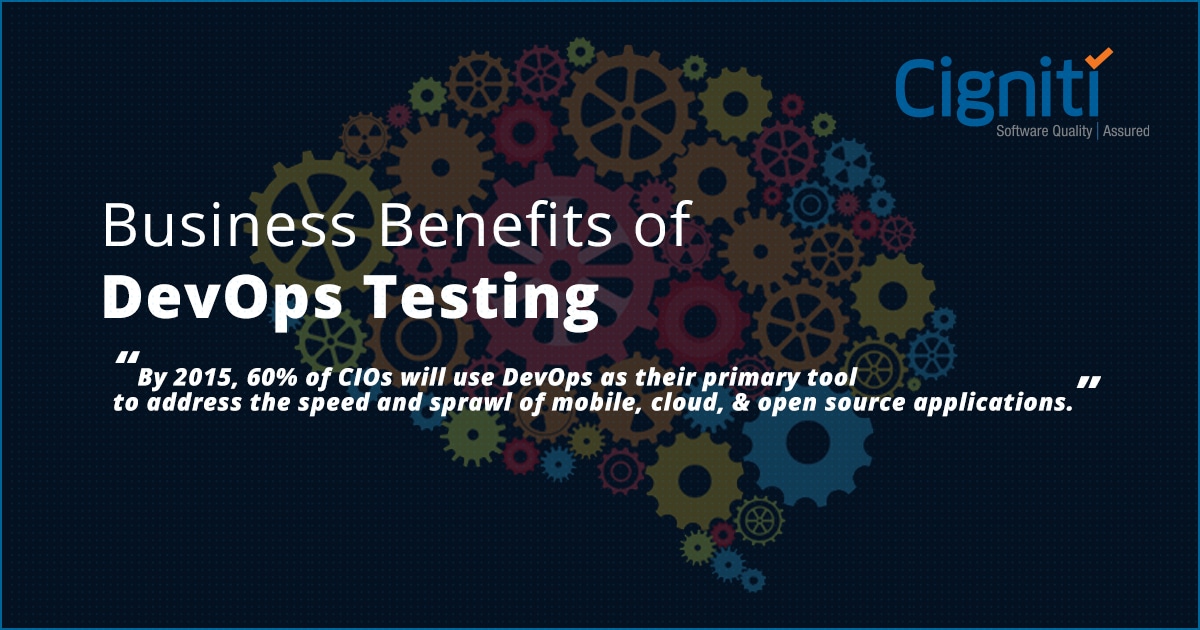Empowering DevOps success with microservices & containerization
“DevOps is not a goal, but a never-ending process of continual improvement”, says Jez Humble, the co-author of The DevOps Handbook. He says, “The long-term value of an enterprise is not captured by the value of its products and intellectual property but rather by its ability to continuously increase the value it provides to customers — and to create new customers — through innovation.”
Not only DevOps, but the entire IT industry has been and is on an ongoing journey of improvement. And that becomes evident when we look back and compare some of the earlier methods of software development with the modern methodologies.
The duo of Agile and DevOps is enabling enterprises to drive quality in their deployments like never before. With shift-left, shift-right, and shift-everywhere strategies, quality assurance and software testing are taking a center stage.
Automation technologies coupled with the CI/CD pipeline have made it possible to perform releases at a much faster pace. Yet, there is a wide room of improvement when it comes to achieving the desired levels of efficiency and controlling the costs.
In the last few years, there has been an upward trend observed among various enterprises regarding the adoption of microservices and containerization technologies.
Despite being around for almost over a decade now, the buzz around these technologies has just started getting stronger. By giving a break to the traditional complexities of humongous applications, they are like a breath of fresh air for both developers and the QA professionals.
Although, microservices and containers are usually referred to in the same sentence, they can operate independent of each other, and also work really well when put together.
Further in this blog, we’ll discuss how the microservices and containerization technologies fit into the DevOps picture.
Microservices vs. Containers
Both microservices and containers are pretty much literal in their meaning.
In layman’s terms, a microservice is the miniaturized, deconstructed version of a complex software application. Whereas, a container packs all the dependencies required to run a code and can be used to run or deploy it.
Now coming to a more detailed explanation –
Microservices is an architectural style. In a traditional, monolithic application, all the services are within a single architecture. For example, in a monolithic ecommerce application, the services related to browsing, purchasing, returning, and exchanging are all tightly coupled and interdependent on one another. On the other hand, if the ecommerce application was following microservices architecture, each of the services would operate independent of each other and are loosely-coupled.
Due to the loose coupling, each of the services can be developed, maintained, tested, and deployed independently. Changes in one microservice would not impact the performance or functionality of the other microservices. And, when they would need to communicate with one another, they would rely on the third-party APIs to do so.
Containerization is a way of forming a mini-package of an isolated environment that contains everything required to run an application – binaries, libraries, configuration files, and other dependencies. It is a form of operating system virtualization and an incredible way of achieving scalability through efficient utilization of available resources.
A container and a microservice can operate without one another. However, a container can be used to deploy or run a microservice. The microservices within these containers can communicate via RESTAPIs.
The confluence of DevOps, microservices, and containers
Both containers and microservices architecture offer the benefits of independent deployability and scalability. Due to the loosely-coupled services, the microservices architecture enable the software development and software testing team to code, deploy, test, and integrate at their own pace. They need not wait for the entire application code to be ready.
As changes in one microservice do not impact the others, incremental changes are easier to do and there is no need to rewrite the entire code for a minor functionality change.
The DevOps culture is all about continuous feedback and continuous improvement, and the independent nature of microservices and containers support the propagation of this practice.
The microservices testing process also takes place separately for each microservice initially. As per the microservices testing best practices, the QA process takes place at five levels – unit tests, component tests, contract tests, integration tests, and end-to-end tests.
Also read: Best testing strategies in a Microservices architecture
Having the QA practice established at the multiple layers of a microservices architecture results in an excellent quality end product, with minimum effort and maximum results.
This practice allows QA to begin early in the software development lifecycle and facilitate timely defect detection and resolution. As a result, there are no last-minute changes and code is deployed in time with the highest quality outcome. This further leads to faster time-to-market and lowers the overall costs for the enterprise.
How can we help
At Cigniti, we standardize efforts and ensure accelerated time-to-market with DevOps testing solutions. We focus on delivering improved deployment quality with greater operational efficiency. Our DevOps testing specialists with their deep experience in Continuous Integration (CI) testing & Continuous Deployment (CD) help configure & execute popular CI/CD tools supporting your DevOps transformation & application testing efforts.
Having worked with both the monolithic and microservices architecture type applications, our DevOps QA experts are well-versed with the complexities and nuances, and have immense knowledge and experience required for supporting the release of a high-quality application.
Schedule a discussion with our experts to discuss your QA requirements





Leave a Reply